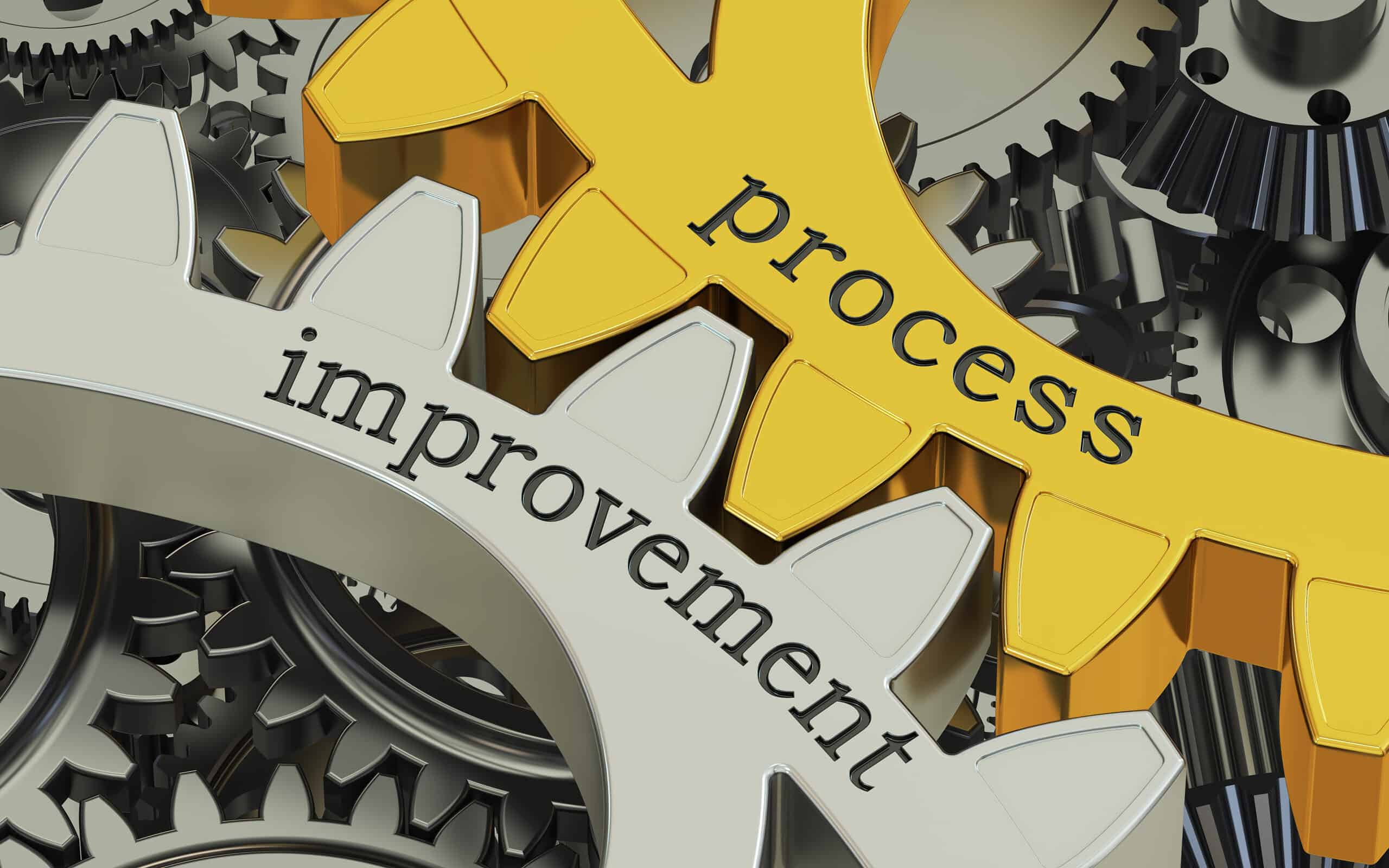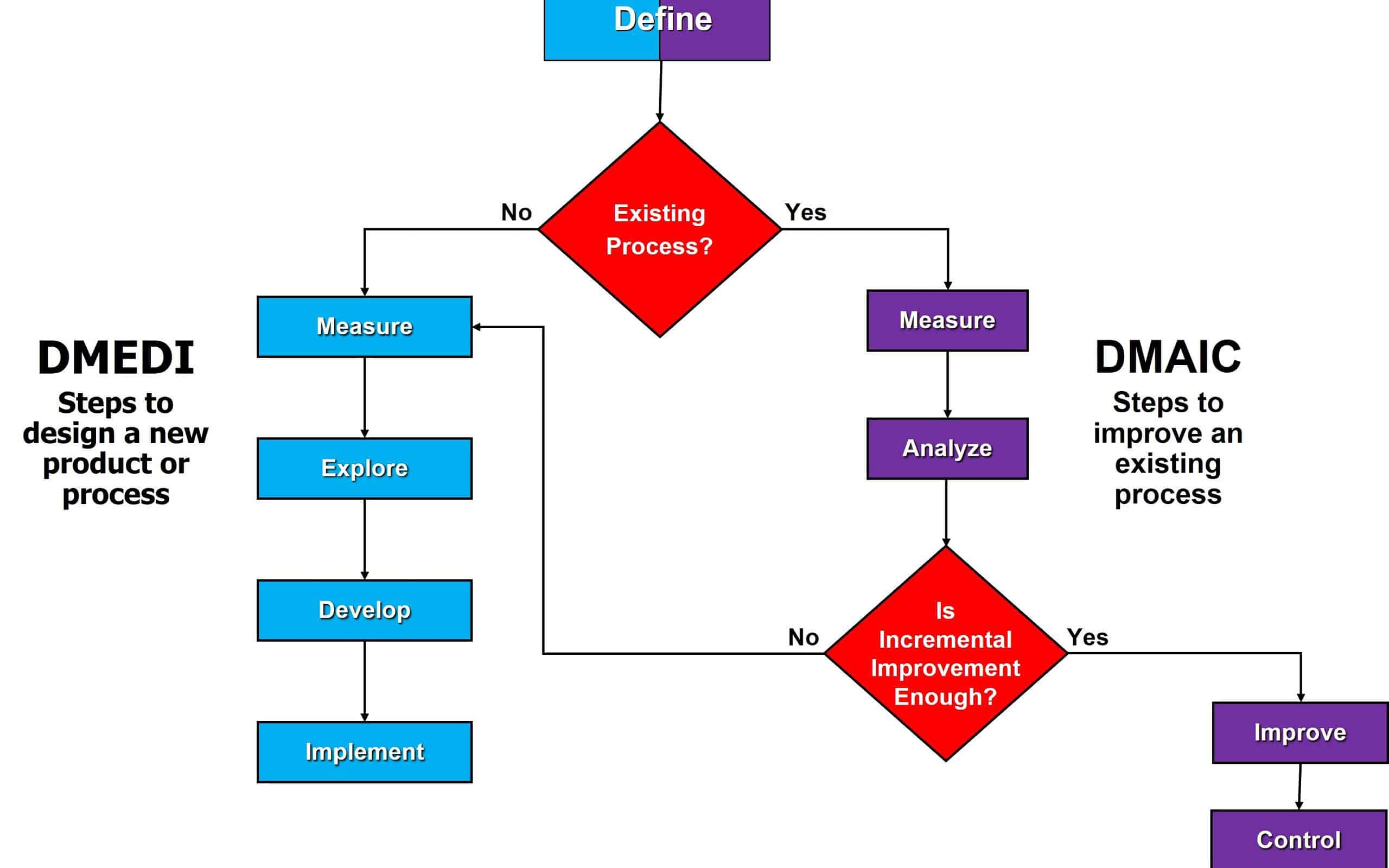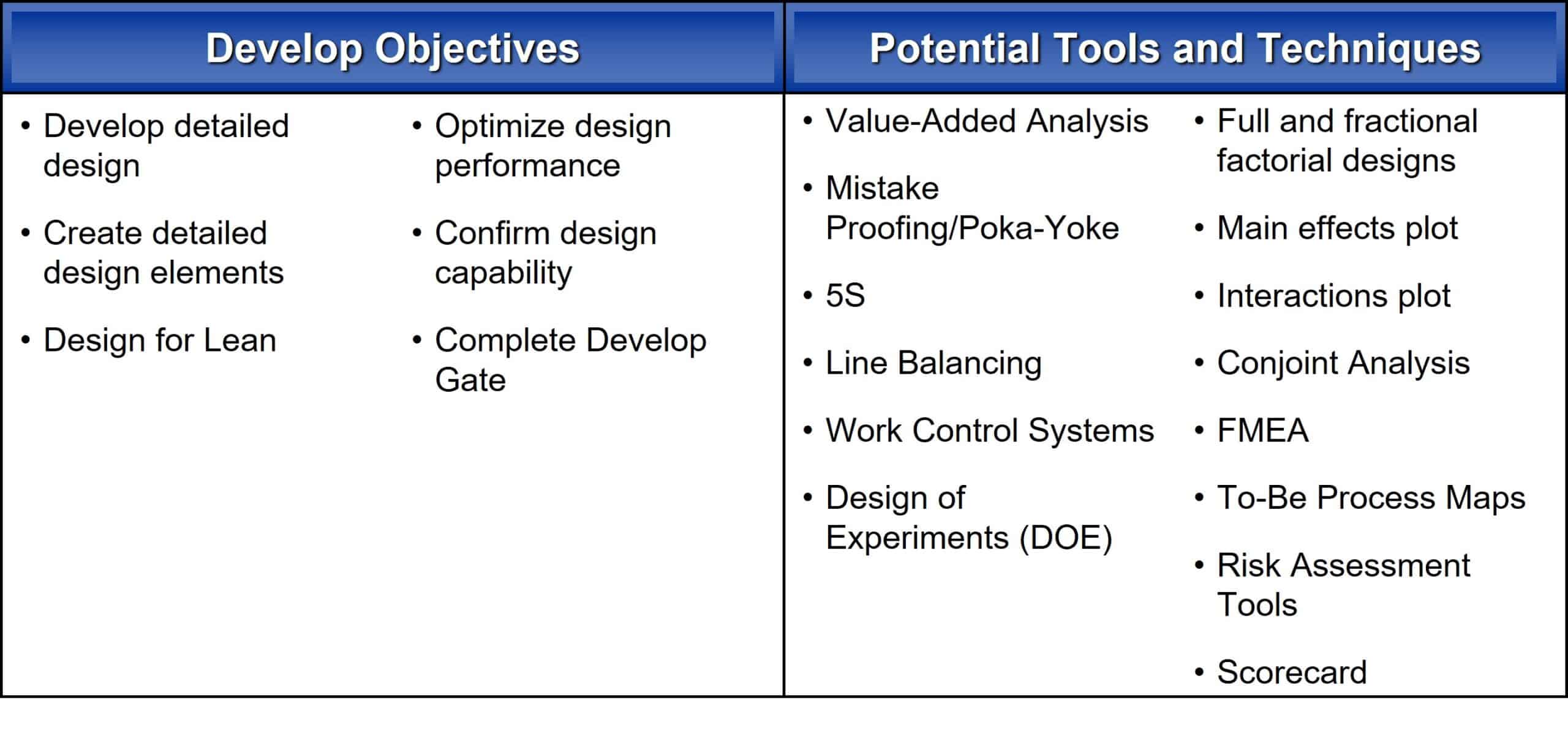
DMEDI stands for: Define, Measure, Explore, Develop, and Implement. This differs from the basic Six Sigma methodology of DMAIC which stands for: Define, Measure, Analyze, Improve, and Control. Both methodologies are designed to improve your processes and products.
Whereas, DMAIC is designed for incremental improvements of existing processes, DMEDI focuses on more robust improvements for new processes, products, or services. One question that arises is which method should be used since there is significant overlap between the actions taken in DMAIC and DMEDI. This can be answered using the graphic below as a guide.

Overview: What is DMEDI?
Let’s see how the stages of DMAIC and DMEDI vary with respect to the different actions and tools that are used.
| DMAIC | DMEDI |
| DEFINE – Determine Project Scope, Objectives, Resources, Constraints | DEFINE – Similar to DMAIC |
| MEASURE – Determine Customer Groups, Determine CCR’s, Obtain Data to Quantify Process Performance | MEASURE – Define Customers and Needs Using VOC and QFD, Determine CCR’s |
| ANALYZE – Analyze Data to Identify Root Causes Of Defects | EXPLORE – Develop Design Concepts, and High-Level Design |
| IMPROVE – Intervene in the Process to Improve Performance | DEVELOP – Develop and Optimize Detailed Design |
| CONTROL – Implement a Control System to Maintain Performance Over Time | IMPLEMENT – Validate Design with Pilot, Establish Controls, Full Scale Implementation |
Here is an overview of the different stages of DMEDI:
Define
- Refine the charter; establish project management basics, plan for good communication, and launch the team
Measure
- Understand the Voice of the Customer
- Translate the Voice of the Customer to measurable Design Requirements using Quality Function Deployment
- Document any existing processes that impact the new design and conduct any baseline data analysis
- Identify opportunities for Quick Improvement
Explore
- Generate alternative concepts and select the concept that best meets the VOC and VOB
- Develop the high-level design
Develop
- Develop an optimized Detailed Design
Implement
- Conduct a pilot. Develop Process Control Plans to maintain the gains. Implement the solution. Finalize the documentation and transfer the project to the process owner
Here are the specific objectives and tools for DMEDI:

2 benefits and 1 downside of DMEDI
As a structured methodology, DMEDI has many benefits for both your customers as well as internally for your organization. Here are a few of them.
1. It ensures customer satisfaction by prioritizing customer needs
The Measure phase of DMEDI is focused on collecting the Voice of the Customer and Voice of the Business which will drive the design concepts and eventual development of improvement strategies. This will allow for the prioritizing of stated customer needs.
2. Structured stepwise methodology
DMEDI is a structured and rigorous methodology and if followed, will allow for a step-by-step approach to identifying what is important to your customers, and the best way to design a system capable of meeting their needs.
3. The downside of DMEDI is that it can be time consuming
If the DMEDI methodology is adhered to, it can take time to complete the project. Since the Develop stage can be very iterative, the team can be delayed in the completion of the project.
Why is DMEDI important to understand?
Given the power of DMEDI in developing new processes and products, it is important to understand the nuances of its use.
Team activity not individual
As in most improvement methodologies, a team format will produce better results than just having one person take on the project.
Discipline needed
Your outcomes will be degraded if the team skips around and doesn’t maintain discipline in adhering to the step-by-step actions of DMEDI.
No straight-line solutions
Developing concepts and potential solutions is not a straight-line process. There are numerous iterations and cascading of ideas until you reach the optimal solutions and recommendations.
An industry example of DMEDI
Here are examples of how DMEDI can be used in a variety of business settings.

Examples of DMEDI applications
3 best practices when thinking about DMEDI
Here are a few tips for effectively doing a DMEDI project.
1. Team selection
Strive for the most knowledgeable and experienced people to serve as the core of your team. Include others to complement the team. Be cautious about any negative impacts of having the process management on the team.
2. Follow a schedule
By its nature, DMEDI is not a rapid process. Develop a feasible schedule and adhere to it. Don’t let the project timelines slip so completion of the project is continuously delayed.
3. Properly select between DMAIC and DMEDI
When deciding on the proper methodology to use for your improvement project, carefully consider whether DMEDI is the proper approach or whether DMAIC is more appropriate.
Frequently Asked Questions (FAQ) about DMEDI
What is the difference between DMAIC and DMEDI?
DMAIC focuses on reducing variation and defects in a current process and produces incremental improvements. DMEDI is a creative approach to designing new processes, products, and services.
Is there a difference between DMEDI and DMADV?
Both are used for the same purpose. That is, to develop new processes and products. DMADV stands for Define-Measure-Analyze-Design-Verify. DMEDI stands for Define-Measure-Explore-Develop-Implement.
How do I determine if I should use DMAIC or DMEDI?
Here is a simple diagram to help you choose between DMAIC and DMEDI.
 Let’s review DMEDI
Let’s review DMEDI
The DMEDI (Define-Measure-Explore-Design-Implement) methodology focuses on creating new processes. As organizations get experienced in the use of Six Sigma, they move from fixing existing processes with DMAIC, to designing processes correctly from the start.
Below is a review of the steps of DMEDI:




